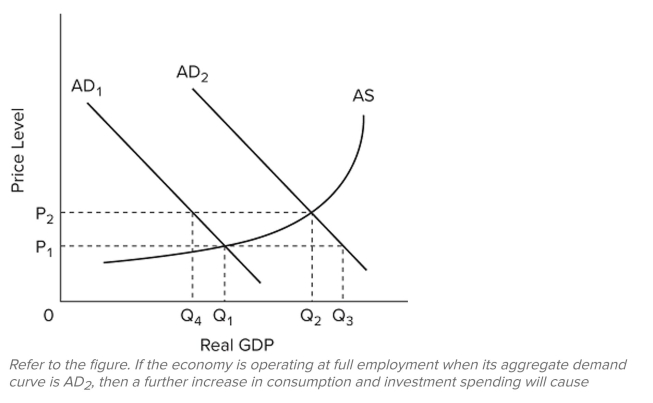Multiple Choice

A) cost-push in?ation, and the new equilibrium output will be less than
B) demand-pull in?ation, and the new equilibrium output will be less than .
C) demand-pull in?ation, and the new equilibrium output will be more than
D) cost-push in?ation, and the new equilibrium output will be more than
Correct Answer:

Verified
Correct Answer:
Verified
Q28: When aggregate demand declines, wage rates may
Q29: <img src="https://d2lvgg3v3hfg70.cloudfront.net/TB8601/.jpg" alt=" A) an increase
Q30: <img src="https://d2lvgg3v3hfg70.cloudfront.net/TB8601/.jpg" alt=" A) decrease in
Q31: <img src="https://d2lvgg3v3hfg70.cloudfront.net/TB8601/.jpg" alt=" In the diagram,
Q32: If the dollar depreciates in value relative
Q34: <img src="https://d2lvgg3v3hfg70.cloudfront.net/TB8601/.jpg" alt=" A) the aggregate
Q35: <img src="https://d2lvgg3v3hfg70.cloudfront.net/TB8601/.jpg" alt=" A) decrease in
Q36: The aggregate supply curve (short run) becomes
Q37: Suppose that nominal wages fall and productivity
Q38: An increase in personal income taxes would